Welcome back to my series taking a look at blending reconstruction and gnosis! This series has grown to be a monster, and I still (shockingly) have so much more to say.
But this post is where we finally start to translate that research/gnosis/prior results/experience into practical application. (I mean it this time.)
So, let’s jump right into the fuckery. And as always, we begin with a working theory.
My Working Theory (Take One)
When I put my first Götavi grid experiment together, my working theory was that the grid was a way to call up the dead. You know, some good, old-fashioned, pants-shitting necromancy.
By that point, I’d already experimented with calling up the dead. I’d worked with doorposts and crossroads effigies and sang them forth with dirges. And at the time, I thought the grid might work in a similar way. My expectation was that it would create some kind of portal with similar effects to what I’d experienced before. Effects like a discernible drop in temperature, “winds” that seem to move with intent, noises, apparitions, psychic communication etc.
But hindsight, as they say, is 20/20. Looking back now, this working theory is laughable—a massive oversight.
It was also far from my only fuck-up as well.

But mistakes aren’t just to be expected in this kind of work; they often turn out to be the best teachers we have. Without my mistakes, I literally wouldn’t have the insights I have now or a workable grid practice.
Like the late, great Bob Ross used to say, “We don’t make mistakes. We just have happy accidents.”
(Unless of course those mistakes get you killed, and then we replace “happy” with “deadly.”)
As an aside, did I mention this isn’t exactly safe?
Reconstruction And Magical Stories
Once you have your working theory (as jacked up as it may be), then it’s time to take a look at the components of the magical story you want to tell.
You may have noticed that I think of magic in terms of story. And there are a whole bunch of reasons for this. But for now, let’s just say the story analogies in this post are an easy way to convey a lot of ideas relatively quickly.
Now, think back to the post covering the research phase of this process. What did I do?
Well, first I gave a description of the Götavi grid (or as I like to call it, the “Devil’s Hopscotch”). Then, I deconstructed the various elements of the grid, which included the number nine, islands/mounds, posts, the SW orientation, and kinds of offerings found. As a part of this deconstruction, I discussed similar finds and their contexts as well as any possible symbolism.
In other words: I attempted to dig into the background stories of each of those elements in order to form a theory about the meta plot.
By the end of that post, I’d outlined a range of textual and archaeological evidence supporting my initial (gnosis-based) theory that the grid’s ritual story was eschatological in nature.
Here is where we get to the question: What now?
This seems to be a sticking point for a lot of people. They’re fine with the research or fine with the woo, but find it hard to bridge the two. (Hey, that rhymes!) The transition from research to practice, and especially in a way that incorporates gnosis, can be hard to imagine. But it doesn’t have to be that way, especially not when you choose to think about magic as story.
All The Ritual Space Is A Stage…
Think about the average theater production. After all, ritual is a type of performance (a perspective the Norse seem to have shared).
Now ask yourself: What do you need to put on a performance?
You need a setting, actors, props, choreographed actions, and a script—all of which need to come together coherently to tell the story.
In the context of my grid experiment, the grid and its orientation were the setting. The actors would be the ritualists as well as any beings that showed up. From my perspective, that cast also included some of my ritual tools as well, though I know not everyone thinks that way. The choreography for the production were the ritual actions, and the script was…well, it was the script.
From studying the description of Hermóðr’s Hel-ride, scholarship analyzing conceptions of death and mounds, and potential examples of eschatology in archaeology, I even had a basic plotline from which to derive a framework. I summarize it here as follows (please feel free to write some fanfic if inspired):
“Area ritualist opens doorway to dead in symbolically potent space that possibly symbolizes the Hel-Road in order to facilitate the passage of dead into ritual space for communication.”
Ugh…I got it so fucking wrong. But hopefully you get the point about the story thing.
Reconstructing The “Stage”: The Physical Elements
I have many regrets in life, but one of my greatest is that I wasn’t born rich and therefore able to buy real estate on a salt marsh. As you might imagine, growing up barely hugging the poverty line while Maggie Thatcher broke unions and snatched milk was a huge impediment to me. (Those Poll Tax riots were pretty lit though!) The sad fact of the matter is that the intergenerational poverty I was born into not only prevented me from buying a salt marsh for weird, necromantic experiments, but also stopped me from hiring a construction crew to build a grid on that hypothetical salt marsh as well.
(In case it wasn’t clear, that entire last paragraph was sarcasm.)

When I think about the utter fripperies the über rich spend their money on instead of trying to solve world hunger/the climate crisis/buying salt marshes and reconstructing (theoretical) Viking Age necromantic tech, I just…
(Okay, that bit wasn’t so much sarcasm as genuinely held sentiment about solving world hunger and the climate crisis.)
Well anyway, I don’t have those resources, so I had to get a little creative.
One of the key take-aways from the Færeyinga saga grid is that grids could be drawn and temporary.
Or in other words: no wild construction projects needed.
Now, we obviously don’t actually know for sure that the saga grid had the same design as the salt marsh grid. But sometimes you just have to say “fuck it!” and do the thing anyway. (Also, the description was pretty damn close to what the archaeologists dug up.)
Reconstructing the Grid and Posts
The easiest option for reconstructing the grid would obviously be chalking it on a floor somewhere. You could even make some ritual chalk for the purpose, incorporating layers of herbal and charm magic into the process. But as we had a carpet back then and I’d already decided the first experiment would be away from my family, I went a different way instead.
Drawing magic circles on drop cloths from the paint department of your local DIY store is old hat in the occult community. And this is the direction I decided to go in as well. So, off I toddled to my local big box LowesDepot and picked up a drop cloth and some of those jumbo sharpie markers. I also recommend picking up one of those huge wooden rulers as well if you do this and care about straight lines. (Which I don’t.)
The OG Devil’s Hopscotch was 15m x 18m or 49ft x 59ft. For those of you who measure by alligators, this would be roughly equivalent to one large American alligator wide and one large American alligator plus a fifth of another large American alligator long.

Unfortunately though, those dimensions were way too big for any space I could imagine myself using. There’s no way a large alligator would fit in my living room, and I wanted the option of using the grid chez moi if all went well. So in the end, I wound up freehanding my first grid on a 6ft x9ft canvas drop cloth and sort of said “That’ll do!” while laughing maniacally.
And here is where my second fuck-up happened.
Because I had that really unfortunate thing happen where my photograph of the grid got flipped, placing the square on the wrong side…which I then replicated on the cloth and didn’t realize until later. I also couldn’t find any photos of the grid with the directions marked out. All I knew back then was that it had a SW-NE orientation, and that the blood and fat business end of things was in the NE. I had no idea which end of the grid was supposed to be in which direction.
This, by the way, is one of the many reasons why the evaluation and tweaking stages are so important.
But anyway, I had a jacked up grid cloth to go with my jacked up working theory.
The next thing I wanted to recreate was the posts, and here is where I ran into another issue. The information in Nine Paces about their number and location is quite unclear. It could also be the case that archaeologists simply couldn’t get an accurate count of them as well. But given the prevalence of doorpost/thresholds within necromantic/funerary contexts, and me going balls-to-the-wall on my working theory, I was going to have some fucking doorposts. These wound up being a couple of fallen branches I found then chanted over before my first experiment.
Classy, right?
(Don’t worry, I’ll get to the chanting later.)
Reconstructing the “Stage”: The Action Elements
Once I had my jacked up grid, I turned my attention to recreating the island/mound element. Between the work cited in the research post and my dream about landscape/ritual space reflecting cosmology/story, I knew that I had to find a way to incorporate them into my experiment. So, I opted to do so symbolically, through circumambulation while pouring out water and chanting. As the Götavi people built the island first before the grid in the salt marsh, I decided the symbolic recreation of an island had to come first in my experiment as well.
There’s a lot of ire in some Heathen communities regarding ritual spaces that happen to be circular in shape. For many, circles are “what Wiccans do” and their use therefore automatically, “Wiccatru.” A nefarious vector for Wiccan cooties, and also probably a leading cause of men losing the ole “man card.”

Okay, that was going a little too far.
However, despite these more modern ideas and the (thankfully lessening) accompanying irrational fears of things like circumambulation/drumming/entheogens/dance, circumambulation and/or turning is attested in conjunction with magic in OE and ON sources.
Circumambulation And Directionality
In the OE sources, the most obvious example is the Old English Journey Charm, the first part of which reads:
”I encircle myself with this rod and entrust myself to God’s grace,
against the sore stitch, against the sore bite,
against the grim dread,
against the great fear that is loathsome to everyone,
and against all evil that enters the land.
A victory charm I sing, a victory rod I bear,
word-victory, work-victory.
May they avail me;”
The above charm, at least according to scholars like Karin Rupp, was originally intended to be performed. In other words, the traveler was to physically turn in a circle while speaking the charm, effectively casting a protective circle around themselves. (You can read all about it here.)
There’s no mention of directionality here. However, if we look to other examples of ritual turning in the OE sources, we can infer a clockwise direction. One example of this can be found in the Æcerbot (“field remedy”) charm, a charm for removing curses or poison from agricultural land. In the charm, the ritualist is instructed to “turn thrice with the sun’s course (clockwise) as part of the preparatory stages for the main ritual in order to bless four sods from each corner of the affected field. The Field Remedy has an undeniably Christian veneer. However, Jolly considers it “highly likely” that parts of the charm are survivals of a pre-Christian predecessor that was co-opted and Christianized (Jolly, Popular Religion, 7, 26).
Outside of the Field Remedy, circles feature a number of times in the OE magico-medical manuscripts. In one adder bite charm, they’re used to create a protective circle around the bite to prevent the poison from spreading. In another charm, the healer is instructed to make a circle of animal fats and wine and another of bone within which to prepare the cure (Storms, Anglo-Saxon Magic, 41, 86).
In the ON sources, counterclockwise/withershins circumambulation is attested within the context of baneful magic. At the time when I was putting together my first grid experiment though, I only knew of a single example from Grettis saga.
In cha. 79, the “full-cunning” woman, Þuríðr, circumambulates a log backwards and against the course of the sun (ansœlis) as part of her baneful magic against the outlaw Grettir. Once she’s done, the log is then pushed out to sea where it drifts out to Grettir’s hideout on Drangey and torpedoes his remaining luck. This eventually leads to his death (Price, The Viking Way, 273)
In addition to the historical sources, I also had previous experimentation and ritual experience to go on as well. Interestingly, the results of my experimentation have aligned with what we find in the sources. I’ve found it best to circumambulate clockwise when building, healing, or performing ritual to the Holy Powers. And for baneful magic, destruction, communication with the Dead and/or Other, I walk against the sun, sometimes even backwards.
And that is how a person winds up circumambulating widdershins while chanting and pouring out water to fake a mound!
Reconstructing the “Stage”: The Power of Speech
As much as I’ve bemoaned my lack of salt marsh and construction crew in the past two posts, the fact of the matter is that they’re not actually necessary. Speech is a weighty thing in the ON sources. In the Hauksbók version of Völuspá, we’re told that (contrary to the popular perception of spinning) the Norns choose and speak the ørlög of men (Bek-Pedersen, The Norns, 182).
But the power of choice made real by fateful, weighty speech isn’t limited to Nornir. The prophecies of völur also seem to have been a matter of choice and speech as well. In cha. 3 of Hrólfs saga kraka, the völva, Heiðr, hastily recants a negative prophecy and speaks a more positive one out loud (and into being) in order to avoid physical harm. And in cha. 12 of Víga-Glúms saga, Saldís berates the völva, Oddbjörg, for what she sees as a bad prophecy for her sons with the following words:
”I should have thought good hospitality deserved something better, and you’ll be driven
away if you go round predicting evil“
(Bek-Pedersen, Nornir, 201-202.)
Moral of this story, kids? Be careful who you read or work magic for!
So, both Nornir and völur have the power of fateful speech, and more importantly, the power of choice.
But even outside Nornir and völur, speech was a weighty thing. In her book, The Norns in Old Norse Mythology, Karen Bek-Pedersen highlights multiple examples of non-magical people displaying hesitance around making future predictions lest they come true (Bek-Pedersen, The Norns, 186-191).
By the by, the word “fate” is derived from the Latin fatum, which is the past participle of the verb fari, meaning “to speak.” One way we can understand this word is “that which was spoken,” which is one of the main reasons why I continue to use the word “fate” within a Heathen context. Other reasons include compelling arguments like:
“There are six different words for different types of “fate” in ON, and we don’t have clear definitions of what they all mean anyway.”
(Source: Me bitching about ON fate words.)
Speech To Create, Speech to Manipulate
As magical practitioners, we can and should understand speech to be a powerful, world-changing act. Returning to my earlier point about magic and story, it’s important to note that speech is key to one of our oldest forms of storytelling. Nowadays though, we live in a world in which words seem cheap (even as national and global actors wield them as Noopolitical weapons.)
We would be wise to reacquaint ourselves with this power.
Perhaps the best and most useful summaries of speech as a magical tool that I’ve found comes from Shamans, Christians, and Things, a paper by Mr Frog. Ostensibly, he’s discussing the differences between the worldview and mechanics of shamanic magic and those of the tietäjä institution. But this discussion leads to some interesting considerations regarding the “Germanic technology of incantations.”. Specifically, Mr Frog argues that the underlying mechanics of the Finnish tietäjä’s charming practices are rooted within that Germanic incantation technology.
To (partially) quote Mr Frog with this wonderful summary of how charms work:
”…this was the verbal interface with ‘the unseen world,’ which it simultaneously represented and manipulated, actualizing unseen aspects of reality in order to change the experiential world.”
So, never underestimate the power of speech to create what you need when building your experiments.
The salt marsh really doesn’t matter.

Speaking Into Being
To return to Mr Frog’s words above, your speech is the vehicle through which you represent and manipulate the unseen world. In my case, there were two elements I wanted to include but could not in a physical manner. The first was the water around the mound. We can interpret this water as a representation of the water the dead must cross when traveling between our world and theirs. Then there were the doorposts, which we can possibly interpret as a representation of Hel’s gate.
Working theories for rituals tend to lead to working theories about the purpose of the various elements comprising the ritual. These “second order” working theories about purpose and place in cosmology are what will allow you to create the verbal elements, or “script.”
Technically speaking, when representing otherwise impossible elements for magical experimentation, your magical speech needs to do the following:
Effectively introduce the element you wish to represent.
Locate that element within the cosmology within which your magic experiment is “set” (according to your initial working theory)..
Delineate the function of the element within the context of the ritual or magical story you’re creating.
Speaking Into Being: Prose and Function
Fancy liturgy is wonderful when done well. If you can write that kind of liturgy while meeting the above criteria, that’s wonderful! But I want to be clear that there’s also nothing wrong with being blunt and to the point either.
Saying, “These sticks are now the doorposts of the mighty Helgrindr!” might not sound great, but it gets the job done. I think even the most skilled liturgist gets blunt when things go sideways and they have to work quick and dirty.
Look at me extolling the virtues of bluntness! (It’s the shocking plot twist absolutely everyone who knows me saw coming.)
We just can’t always have amazing liturgy, you know? So, no one should feel ashamed about theirs for not being fancy enough. It’s far more important to have accurate speech than speech that sounds wonderful but has more “plot holes” than Swiss cheese. And especially when there are plenty of beings out there who are known for exploiting those holes.
On that note, it’s always good to have some charms memorized that you can pull out as needed. Hallowing charms, protection charms, and exorcism charms are all useful to have floating around in the brain for if (when) things get “spicy.” I already gave you one in the first verse of the Old English Journey Charm quoted above. Just adapt the first couple of lines to better fit your own worldview, and get memorizing!
Oh, and like any magical skill, don’t forget to practice performing those charms.
One final thing I want to mention before giving a specific example, is to pay attention to rhythm if you have the luxury to do so. One of the benefits of working with poetic meters like the ON galdralag (“magic spell meter”) is that it has a good rhythm for chanting when done well. This is excellent if you have to chant a charm over and over again. It makes it easier to remember, harder to fuck up, and also helps you into an altered state. There’s a transformative element within the final lines of the meter as well, which I find does some of the work for me. Handy, right?
Prose And Function: A Handy-Dandy Example
Anyway, here’s an example of the kind of thing I might say while circumambulating with water:
”Step by step,
Against the sun
The moat of a mound I make
A Gjöll on the Hel-Road
A ring between
Within this ring the dead reside
Within this ring the dead remain”
Now, that wasn’t great, but hopefully you see what I mean. When combined with the actions themselves, I’ve communicated what I’m doing and what that action symbolizes. I also locate the mound moat/Hel-road river within the wider cosmology, conveying the general idea of a body of water separating the realms of living and dead. Finally, I name the purpose of the mound-moat/Hel-road within the context of the ritual. Because it doesn’t just serve to symbolize cosmology but also needs to contain any dead who show up as Hel or the mound contain the dead. As a part of this, I use an approximation of galdralag. This allows me to also take advantage of the transformative function conveyed within the final two lines of the charm.
When actually calling the dead though, I rely on a different form of speech: song. For the grid experiment, the most natural choice for me given my working theory was an adaptation of an old dirge called A Lyke Wake Dirge. The original—which likely would have been sung over a corpse—describes the journey to the afterlife. This journey was very much as a Christian might have seen it during the time the song was composed. So, to better reflect the story I wanted to tell, I needed to create an adaptation.

This is coming entirely from experience, but there really is nothing quite like wailing a dirge to a slow beat to call up the dead.
Good times.
Putting It All Together
Moving on from physically and verbally reconstructing the various elements, the next thing I focused on was figuring out the “order of business.” This is basically when you sit down and figure out the most logical way to bring together the various elements of your ritual. Another way to think about this is along the lines of ordering the elements of your story so that it forms a coherent narrative.
One of the biggest mistakes I’ve made when putting together experiments before is overcomplicating what I’m doing. So, I try to keep things as simple as possible and try to avoid adding extraneous elements and/or steps.
Shockingly (especially with all of my other fuck ups by this point), I did actually manage to keep things simple for my first grid experiment.
The Order Of Business (Take One)
- Get out cloth and chant over “posts.” Make sure I have everything I need.
- Create/delineate ritual space through incantation and circumambulation with water.
- Open up grid cloth within ritual space. Ritual speech locating the cloth in cosmology and delineating function according to my working theory.
- Speak charm over sticks to make doorposts. Install in the NE. Speak charm locating the posts in cosmology and delineating function.
- Make initial offering to Hel asking her to open Helgrindr and allow some of her subjects to temporarily visit. (I included this step because it’s both good manners but smart to include relevant death deities when potentially working necromancy IME.) Deposit offerings in NE.
- Move to SW. Enter light trance so as to monitor physical and magical effects. Sing adapted dirge (the version that describes the journey from Hel.)
- Make offerings to any dead who show up to welcome them. See what happens. React accordingly. (Welcome to the “find out” section of this flavor of “fuck around and find out”)
- Express gratitude for their presence when done and make a final offering to them. If no one showed up, make offering anyway in case they did but you just didn’t perceive them.
- Sing/guide any dead back using the version of the dirge describing the journey to Hel. (Important: perform this step anyway even if you felt/saw nothing!)
- Express gratitude to Hel and make final offering.
- Chant another incantation over the posts to return them to being sticks and take them up.
- Take up the grid cloth once you’re sure any visitors are gone. (Monitor for environmental changes associated with dead and perform divination if unsure.)
- Circumambulate clockwise, chanting a charm returning the space to its previous state.
- Purification, assessment, and more purification.
Remaining Concerns
Once I had all of the above figured out/in place, the only things left to figure out were offerings and location.
Offerings
As I discussed in the post on research, the evidence of offerings on the grid demonstrates offerings of blood and fat made to the NE of the grid and less bloodier ones to the SW. Price also suggests in Nine Paces that the grid was likely a site of blood sacrifice as well.
However, blood and fat were not really doable options for me. Especially seeing as I also planned to conduct that first experiment away from home. One potential solution to this could have been melted lard and blood from meat purchased from the supermarket. The latter is something I’ve offered before in the vein of Kormaks saga to the ælfe; I have no issue doing that. But blood congeals when exposed to air and fat congeals when it cools, which would have made it impossible to pour out either substance. So, with all of that in mind, I leaned into the symbolic again and went with red wine.

Location
As far as I know, I was the first human to experiment with the grid in this way since the Götavi site was discovered. This meant that I had absolutely no idea what to expect (if anything) going into that first experiment. Because of this, I opted to perform the first experiment away from home and basically in the middle of nowhere. I may not have known what was going to happen, but my instincts were telling me something was</em? going to happen. Moreover, I couldn’t shake the feeling that that “something” would be pivotal in some way.
But events can be “pivotal” in many ways. For example, the assassination of Archduke Franz Ferdinand was pivotal as fuck, and that turned out terrible for millions of humans. I didn’t want to expose my family and neighbors to any potentially dangerous effects stemming from my experiments.
So naturally, I booked a cabin up a mountain in WV with some friends.

I’ll talk about that first experiment in my next post.
Be well.
Sources
Bek-Pedersen, Karen. Nornir in Old Norse Mythology
Bek-Pedersen, Karen. The Norns in Old Norse Mythology
Frog, Mr. Shamans, Christians, and Things in between: From Finnic–Germanic Contacts to the Conversion of Karelia.
Jolly, Karen. Popular Religion in Popular Religion in Late Saxon England: Elf Charms in Context.
Price, Neil. Nine paces from Hel: time and motion in Old Norse ritual performance.
Price, Neil. The Viking Way: Magic and Mind in Late Iron Age Scandinavia.
Rupp, Katrin. The Anxiety of Writing: A Reading of the Old English Journey Charm
Storms, Godfrid. Anglo-Saxon Magic.


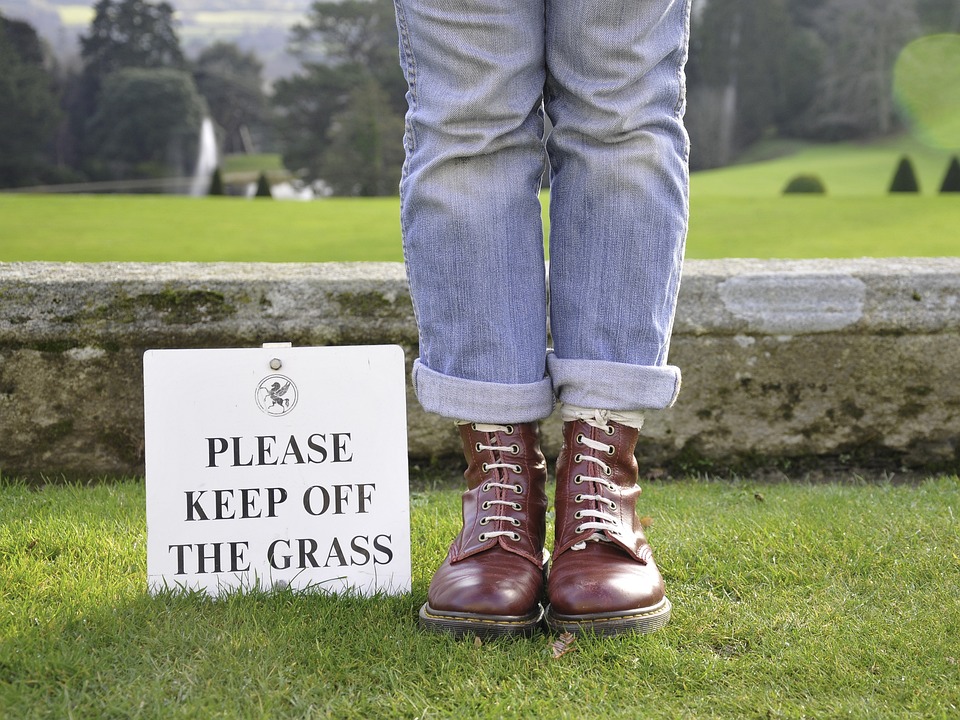





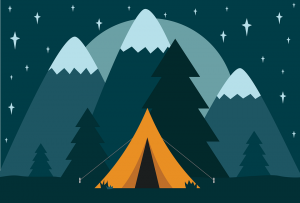




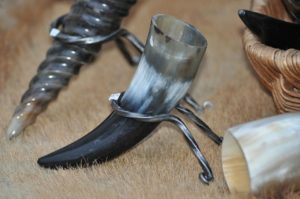



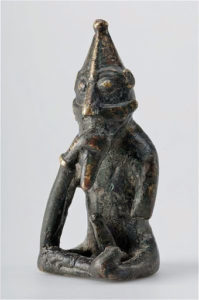 figure. Unsurprisingly, he’s been interpreted as a representation of Freyr. But for all of his blessings beneath the belt, this ‘God of the World’ is all of 7cm/2.75” tall. So, pocket-sized for your convenience. Just ask Ingimund from the Vatnsdæla saga about his missing Freyr amulet..
figure. Unsurprisingly, he’s been interpreted as a representation of Freyr. But for all of his blessings beneath the belt, this ‘God of the World’ is all of 7cm/2.75” tall. So, pocket-sized for your convenience. Just ask Ingimund from the Vatnsdæla saga about his missing Freyr amulet..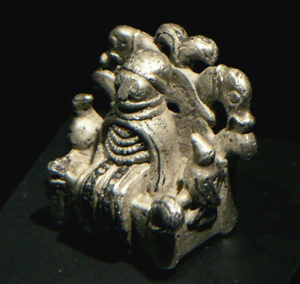
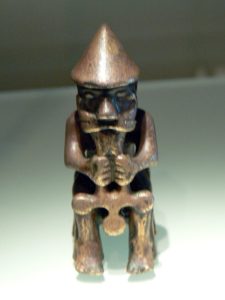 6.7cm/2.6” (with his hammer taking up a good deal of those centimeters/inches).
6.7cm/2.6” (with his hammer taking up a good deal of those centimeters/inches).

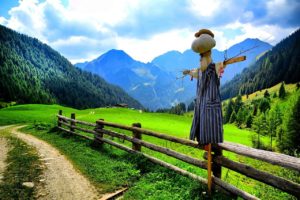 de France. In one of her lais, Bisclavret, a man-turned-werewolf is prevented from returning to his shape of birth by an unfaithful lover hiding his clothes. You see, when it comes to masking and its sibling, shapeshifting,
de France. In one of her lais, Bisclavret, a man-turned-werewolf is prevented from returning to his shape of birth by an unfaithful lover hiding his clothes. You see, when it comes to masking and its sibling, shapeshifting,  ”Woden worhte weos, wuldor alwalda,
”Woden worhte weos, wuldor alwalda, the island of Sámsey. There they encounter a ‘tree-man’ who speaks to them of his purpose and origin. He was the product of sacrifice, and had been made to bring about the deaths of men in the southern part of Sámsey. But over the years, he’d become overgrown and his clothes and flesh rotted away.
the island of Sámsey. There they encounter a ‘tree-man’ who speaks to them of his purpose and origin. He was the product of sacrifice, and had been made to bring about the deaths of men in the southern part of Sámsey. But over the years, he’d become overgrown and his clothes and flesh rotted away. makes the sacrifices until he receives a favorable oracle when he has a piece of driftwood brought in and fashioned into the shape of a wooden man. Then with “the monstrous witchcraft and python’s breath” of those two sisters, as well as the heart of a man sacrificed for the purpose and the proper attire for a man, they sent their tree-man, now named Þorgarðr, into the world to kill Þorleif (North 93 – 95).
makes the sacrifices until he receives a favorable oracle when he has a piece of driftwood brought in and fashioned into the shape of a wooden man. Then with “the monstrous witchcraft and python’s breath” of those two sisters, as well as the heart of a man sacrificed for the purpose and the proper attire for a man, they sent their tree-man, now named Þorgarðr, into the world to kill Þorleif (North 93 – 95).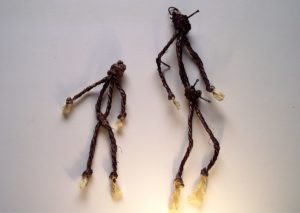
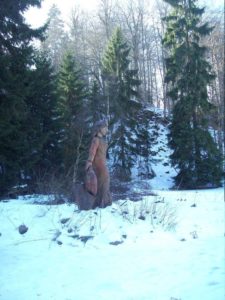 Hulle set not far from Wintersbach. And this is the tale that led me down the rabbithole so to speak. First came the spinning, and then more research and a pilgrimage of sorts to the Hollenteich up on the Hoher Meißner. There, on a frozen pond before a modern statue, I had a deeply holy (and unexpected) experience.
Hulle set not far from Wintersbach. And this is the tale that led me down the rabbithole so to speak. First came the spinning, and then more research and a pilgrimage of sorts to the Hollenteich up on the Hoher Meißner. There, on a frozen pond before a modern statue, I had a deeply holy (and unexpected) experience. But one day, while spinning at the side of a well, she accidentally drops her spindle into the well after pricking her finger.
But one day, while spinning at the side of a well, she accidentally drops her spindle into the well after pricking her finger. made sure to cut herself and throw a spindle into the well before she herself took the plunge is perhaps telling.
made sure to cut herself and throw a spindle into the well before she herself took the plunge is perhaps telling. First the dead pass over a thorny moor (‘Whinny muir’) that will prick them. Then they must pass over the ‘Brig o’Dread’. And then finally, because this is a Christian song, they must roast in Purgatory for a while. But at every turn, these tortures can be mitigated by one’s behavior in life. Those who gave the charity of socks and shoes (‘hosen or shoon’) will find socks and shoes to protect them on the thorny moor. Those who gave the charity of food and drink, will not be shrunk and burned by Purgatory’s fires. (The Brig o’Dread is its own challenge, and I’ll be taking a look at it in the next section.)
First the dead pass over a thorny moor (‘Whinny muir’) that will prick them. Then they must pass over the ‘Brig o’Dread’. And then finally, because this is a Christian song, they must roast in Purgatory for a while. But at every turn, these tortures can be mitigated by one’s behavior in life. Those who gave the charity of socks and shoes (‘hosen or shoon’) will find socks and shoes to protect them on the thorny moor. Those who gave the charity of food and drink, will not be shrunk and burned by Purgatory’s fires. (The Brig o’Dread is its own challenge, and I’ll be taking a look at it in the next section.)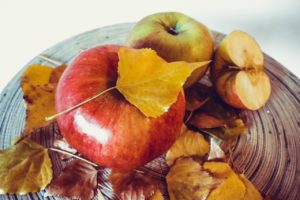 century Icelandic poet Þórbjörn Brúnason made a curious mention of the ‘apples of Hel’. And apples also featured as grave goods in both Scandinavian and early English graves. But apples are not only associated with the dead in Norse lore. The apple seems to be both a food for the dead and a substance of renewal for the gods.(Davidson, Gods and Myths of Northern Europe, 165-166).
century Icelandic poet Þórbjörn Brúnason made a curious mention of the ‘apples of Hel’. And apples also featured as grave goods in both Scandinavian and early English graves. But apples are not only associated with the dead in Norse lore. The apple seems to be both a food for the dead and a substance of renewal for the gods.(Davidson, Gods and Myths of Northern Europe, 165-166). ”Readers familiar with Neil Gaiman’s Sandman series might find some parallels here: the mundus imaginalis is like “The Dreaming,” a realm populated by the dreaming of every being, living or dead, god or human or plant, where each “place” has a geography only inasmuch as it’s necessary for those who visit to travel within it and find the same place again (or visit a place another once visited). In fact, Gaiman likely stole the entire idea for his cosmology from Corbin’s essay.”
”Readers familiar with Neil Gaiman’s Sandman series might find some parallels here: the mundus imaginalis is like “The Dreaming,” a realm populated by the dreaming of every being, living or dead, god or human or plant, where each “place” has a geography only inasmuch as it’s necessary for those who visit to travel within it and find the same place again (or visit a place another once visited). In fact, Gaiman likely stole the entire idea for his cosmology from Corbin’s essay.” of map to this road to the afterlife. First the person dies/passes through water, and then they encounter two different trials. Yet the trials in both sources are far from insurmountable, presenting little problem for the compassionate person.
of map to this road to the afterlife. First the person dies/passes through water, and then they encounter two different trials. Yet the trials in both sources are far from insurmountable, presenting little problem for the compassionate person. write three simple phrases in Chinese.
write three simple phrases in Chinese.